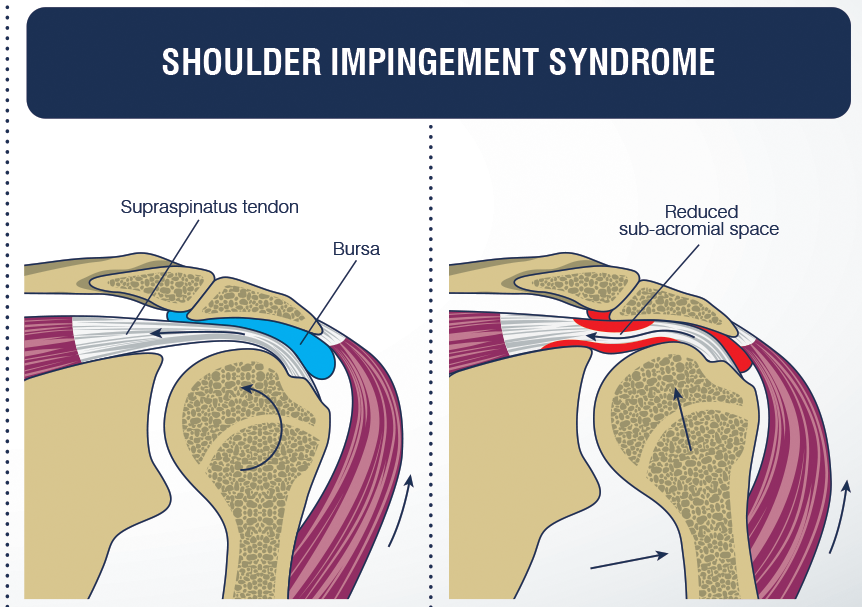With fall sports in full swing, and so many of those sports being considered overhead sports, we have been seeing more shoulder pain in the clinic. In fact, shoulder pain is one of the most common issues physical therapists see from both athletes and non-athletes. Oftentimes, the pain doesn’t result from a traumatic injury, but rather it slowly progresses into a nagging achy pain. If you feel a pinching pain at the tip of your shoulder, or even pain radiating down into your upper arm, you may have what we call shoulder impingement.
What is shoulder impingement?
The rotator cuff muscle called the supraspinatus runs underneath the connection of your clavicle to the shoulder blade at the tip of your shoulder. If there is less than optimal space at this spot, the muscle can “impinge” against the bone and become inflamed and painful. This typically happens when you reach overhead or outside of your base of support. Over time, the muscle can get so irritated that the shoulder hurts even at rest.
What can cause shoulder impingement?
There are a few reasons why the decrease in space and impingement can happen. In fact, it is most often a combination of more than one of these reasons.
- Strength – Loss of strength through the rotator cuff and shoulder blade muscles can cause some muscles to overcompensate and contribute to the impingement.
- Instability – This may seem very similar to strength, but there are some slight differences. Even if you have the strength within your shoulder, your body may not know how to control the muscles. You may also have too much or too little pliability in your shoulder capsule – the tissues directly surrounding the joint.
- Stiffness – When your thoracic spine is stiff it can cause you to slouch forward, which further contributes to the loss of space for the muscles to move. Try moving your arm overhead when you are sitting in a slouched position and then try when you are sitting up straight – it should feel different!
What can you do about it?
Treating shoulder impingement is all about addressing postural issues through increasing strength in your shoulder and shoulder blades, and decreasing stiffness through your thoracic spine. Overall, this will put your shoulder blades in a better position and allow the proper space for the muscles to glide during movement. Working with a physical or occupational therapist will help relieve your pain and prevent it from becoming a chronic condition. Come in to see one of the experts at Freedom Physical Therapy Services!



Nicely written and easy to understand article….Impingement and/or nerve related pain are big shoulder issues these days often due to poor posture.